Transforming a child’s room into a playful haven is a delightful endeavor that brings joy not just to the little ones, but to everyone involved. Whether you’re a seasoned decorator ready to embark on a new project or a beginner seeking inspiration, our guide, “6 Easy Playful Kids Room Decor Ideas,” is here to ignite your creativity and simplify the process.
These carefully curated ideas promise to turn any space into a vibrant, whimsical wonderland that sparks imagination and growth. Each suggestion is designed with practicality in mind, ensuring that the transformation is as rewarding as it is manageable, no matter your level of experience.
Beyond aesthetics, these decor ideas offer practical benefits that enhance the functionality and comfort of your child’s room. With our guide, you can feel confident in your ability to create a space that not only looks fantastic but also supports your child’s development and happiness.
Incorporate Vibrant Wall Murals
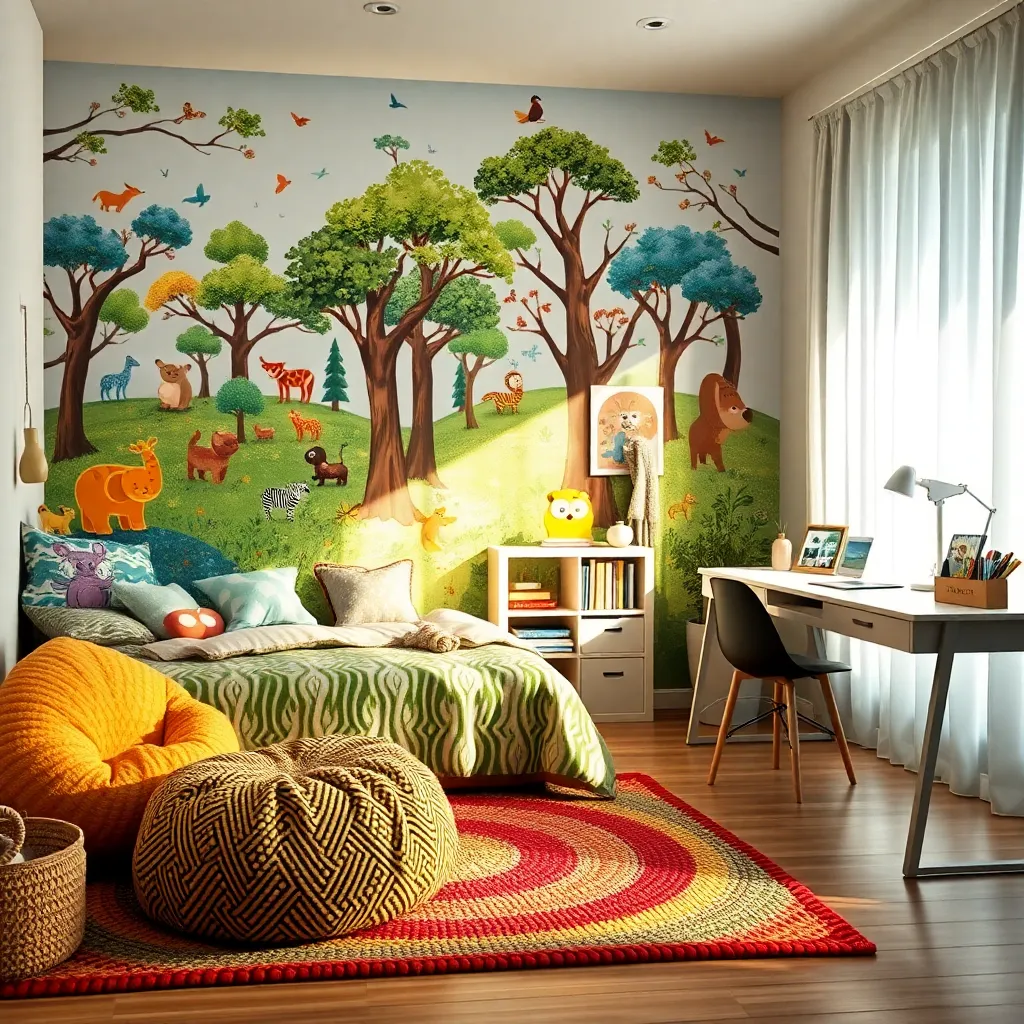
Wall murals are a fantastic way to bring a burst of creativity and energy into a child’s room. Consider using murals that feature your child’s favorite themes, such as jungle animals or outer space, to create a personalized and engaging environment.
To ensure the mural complements the room, choose a wall that serves as a focal point, like the one behind the bed or the play area. Select colors from the mural to use in other room elements like bedding or curtains, creating a cohesive look that ties the space together.
For a beginner-friendly approach, opt for peel-and-stick murals that can be easily applied and removed without damaging walls. Advanced decorators might explore hand-painted murals, which allow for a completely unique design but require more time and skill to execute.
Incorporating murals doesn’t mean you have to overhaul the entire room; they can be a simple yet transformative element. Pair them with minimalist furniture to balance the vibrancy, letting the mural shine without overwhelming the space.
Create a Cozy Reading Nook
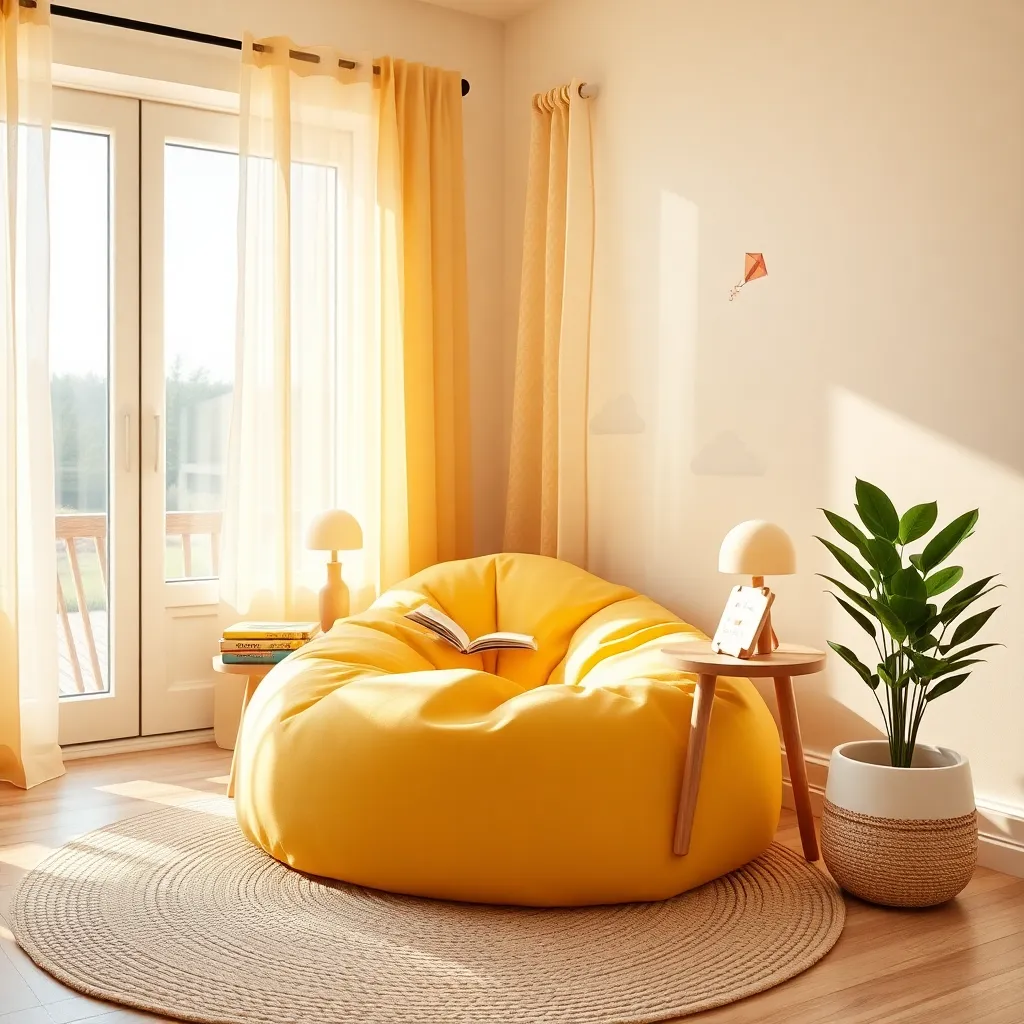
Transforming a corner of your child’s room into a cozy reading nook can be a delightful way to foster a love for books and relaxation. Begin by selecting a comfortable chair or bean bag that suits the space; opt for materials like soft cotton or plush upholstery that invite hours of reading.
Layering is key to creating a snug atmosphere, so add a few throw pillows and a warm blanket in colors that complement the room’s existing palette. Consider using soft, pastel shades for a calming effect or vibrant hues for a more energetic vibe, depending on your child’s preferences.
Lighting plays a crucial role in making a reading nook inviting. A floor lamp with an adjustable arm or a string of fairy lights can provide the perfect amount of light; place them strategically to ensure there are no harsh shadows on the pages.
For a functional yet playful touch, incorporate a small bookshelf within arm’s reach. Encourage your child to personalize the space with their favorite books and small decorative items like a plush toy or a framed family photo, making the nook feel truly theirs.
Add Interactive Chalkboard Walls
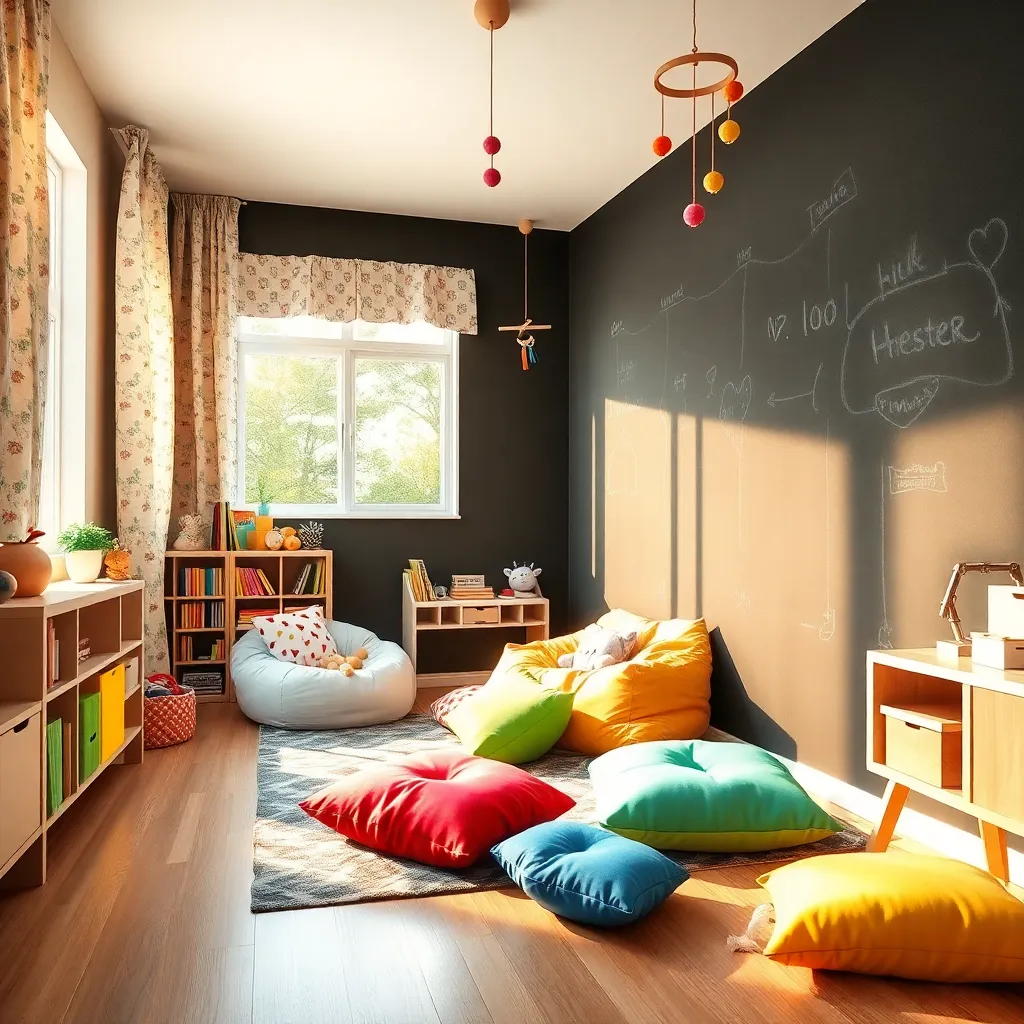
Transforming a section of your child’s room into an interactive chalkboard wall is both a creative and functional design choice. Not only does it provide a canvas for artistic expression, but it also offers a space for learning and planning.
Choose a wall that’s easily accessible and receives natural light for the best effect. Chalkboard paint comes in various colors, allowing you to pick one that complements your existing decor—classic black for a bold look, or a soft pastel for something more subtle.
For the best results, apply at least two coats of chalkboard paint using a roller for a smooth finish. Consider adding a frame or border around the chalkboard area to give it a polished look and to define the space visually.
Incorporate practical elements like a low shelf to hold chalk and erasers, making it easy for little hands to reach. For a more advanced touch, pair your chalkboard wall with a magnetic primer underneath the paint, allowing it to double as a place for magnets and educational tools.
Use Bright, Fun Storage Bins
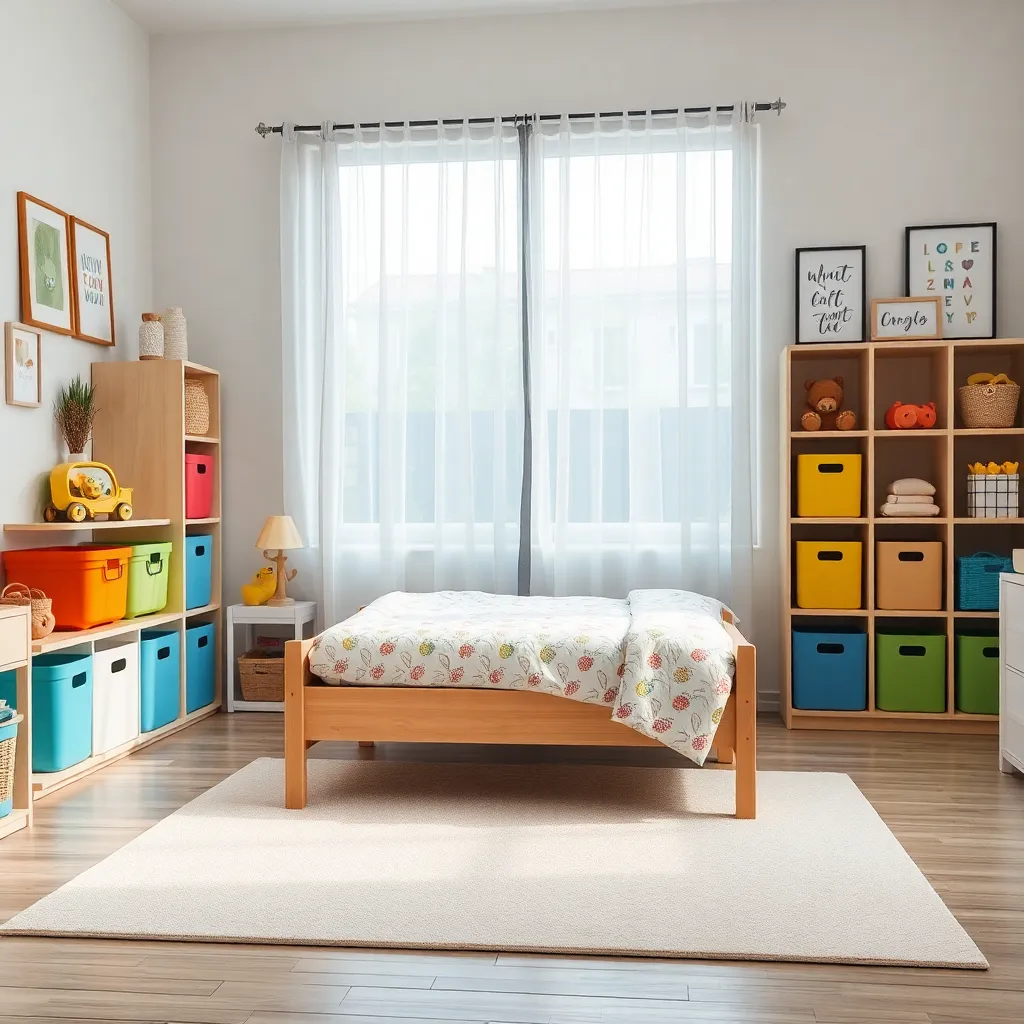
Bright, fun storage bins are an excellent way to add both functionality and flair to a child’s room. Choose bins in vibrant colors like turquoise, sunny yellow, or playful pink to instantly energize the space and make organizing a breeze.
Consider using bins made from durable materials such as canvas or plastic, which are easy to clean and can withstand the wear and tear of a kid’s room. Arrange these bins on low shelves or under a bed to keep toys, books, and games easily accessible for your child.
For a more personalized touch, opt for storage bins with labels or picture tags that help even the youngest kids identify where their belongings go. This not only encourages organization but also adds a playful, educational element to the room.
Mix and match different shapes and sizes to add visual interest and cater to various storage needs. Stackable bins can maximize vertical space, while open-top bins are perfect for frequently used items, making tidying up a quick and hassle-free task.
Install Hanging Swing Chairs
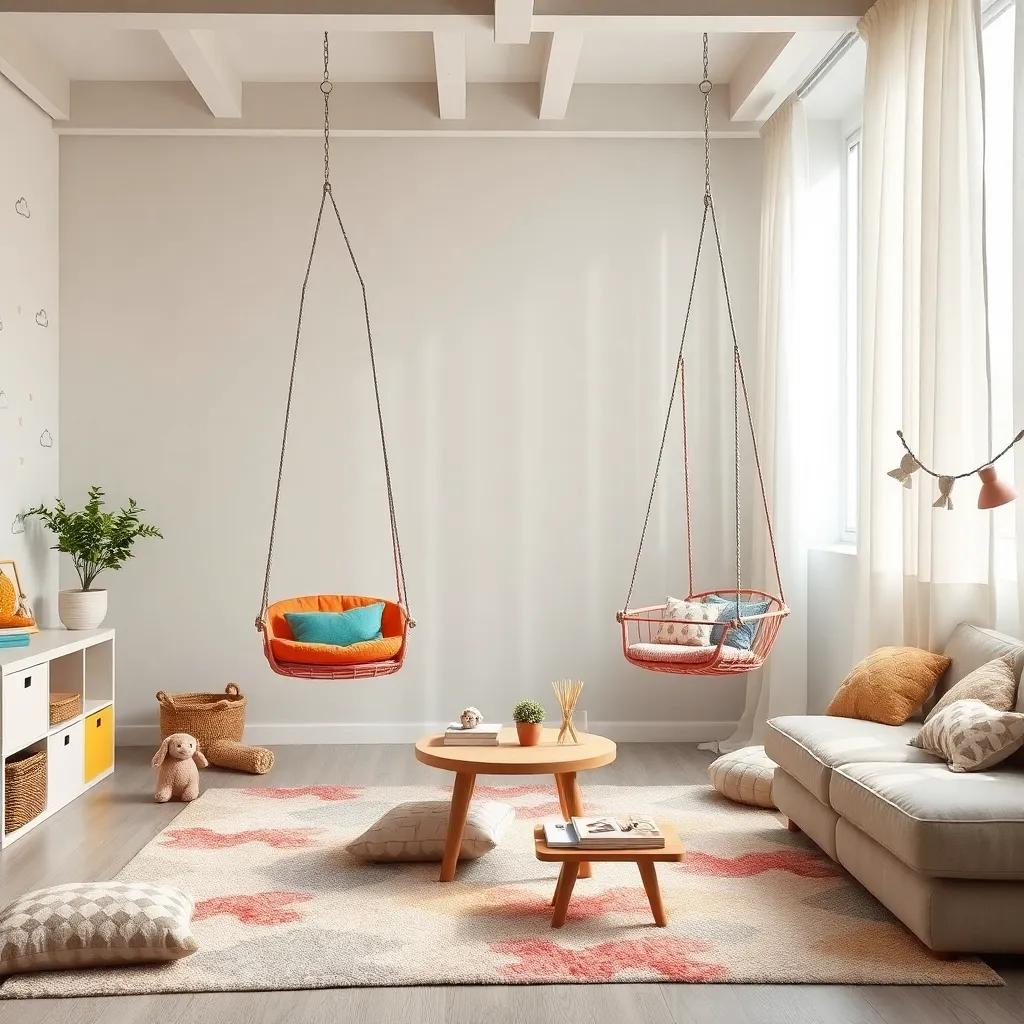
One way to inject a sense of adventure into a kid’s room is by installing a hanging swing chair. Select a chair with a sturdy frame and soft, durable fabric to ensure safety and comfort while offering a fun seating option.
Position the swing chair near a window or in a cozy reading nook to create a dedicated space for relaxation. Ensure the ceiling can support the weight of the swing by using proper anchors and hardware, and consult with a professional if needed.
Incorporate the swing chair into the room’s color scheme by choosing fabrics that complement existing decor. For a playful touch, consider chairs with bright patterns or add decorative pillows in vibrant colors to enhance the fun atmosphere.
Advanced decorators can experiment with different types of swings, like a hammock-style or a cocoon chair, to add texture and interest. Accessorize with fairy lights or a small rug underneath to define the space and make it even more inviting.
Design a Themed Play Area
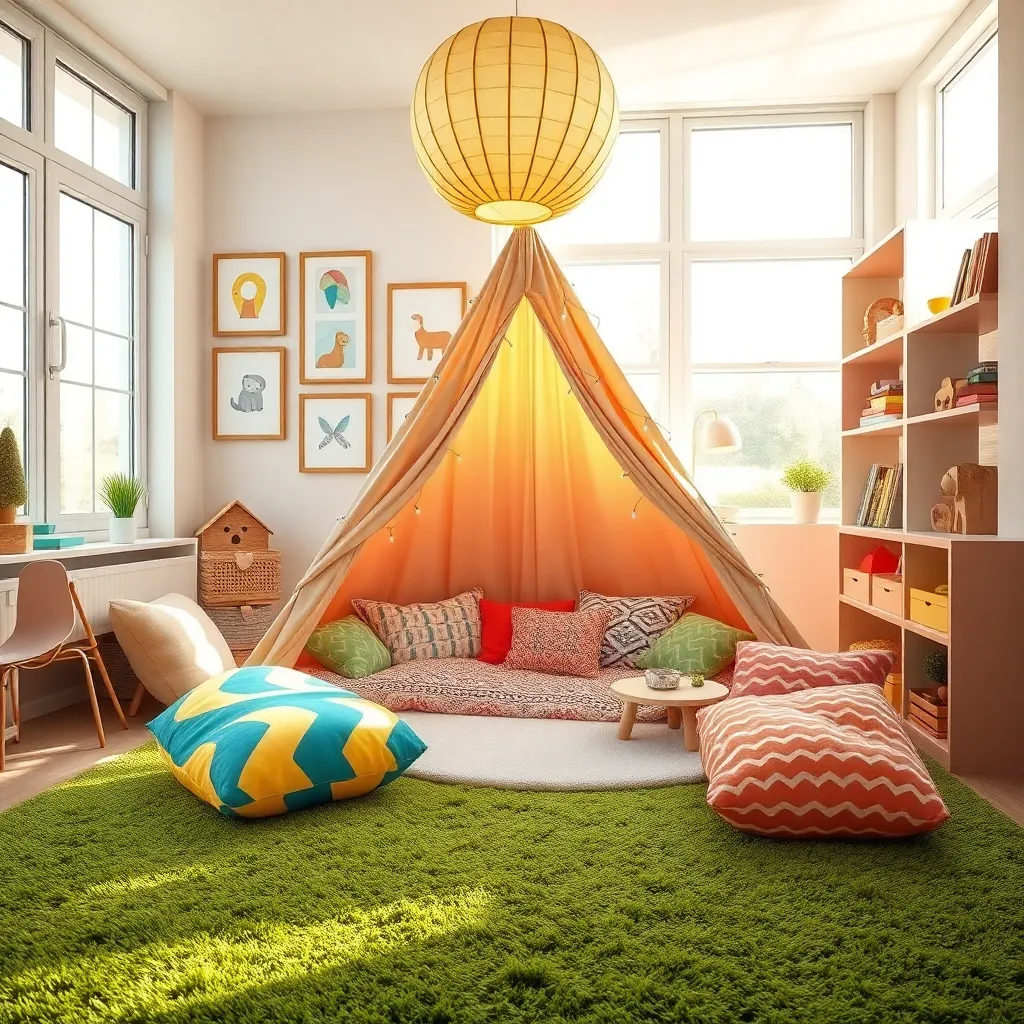
Creating a themed play area can be a delightful project that sparks your child’s imagination. Start by selecting a theme that resonates with your child’s interests, whether it’s pirates, outer space, or a jungle safari. This will serve as the foundation for your decor choices.
Once you’ve chosen a theme, focus on a cohesive color scheme to anchor the space. For instance, a pirate theme might use shades of navy, white, and red, while a jungle theme could incorporate greens and browns. These colors can be applied through paint, wallpaper, or even themed decals to create an immersive environment.
Furniture selection is crucial in themed play areas, as it supports both function and fantasy. Opt for multi-functional pieces, like a bunk bed styled as a pirate ship or a reading nook designed as a spaceship cockpit. Placement is key—ensure there’s enough room for active play while maintaining a sense of the theme’s narrative.
For an added layer of creativity, incorporate thematic accessories such as floor cushions shaped like treasure chests or starry night lamps for a space theme. These elements not only enhance the theme but also provide practical benefits, like comfort and improved lighting. Fine-tune the space with details like themed rugs or curtains to tie the room together seamlessly, creating a magical area where your child can play and dream.
Conclusion: Growing Success with These Plants
In the delightful journey of transforming your child’s room, we explored six key concepts that not only enhance physical spaces but also nurture the emotional bonds within your family. We began with the magic of themed decor, which stimulates creativity and shared storytelling. Next, we looked at incorporating interactive elements, encouraging playful learning and parental engagement. Personalized touches came third, fostering a unique sense of belonging and connection. We then discussed the importance of flexible spaces, allowing for dynamic interactions and growth. The fifth concept was integrating nature-inspired elements to instill a calming, shared appreciation for the world. Lastly, we explored the power of vibrant colors and patterns, enhancing mood and enthusiasm.
Now, take the first step by choosing one idea that resonates most and implement it this weekend. As you embark on this creative project, use it as an opportunity to strengthen your relationship with your child through collaboration and shared joy.
Remember, nurturing these connections today lays the foundation for a thriving relationship tomorrow. Bookmark this article to revisit these ideas and continue building a loving, supportive environment for your family. With each playful update, you’re designing not just a room, but a space full of love and endless possibilities for your relationships.
